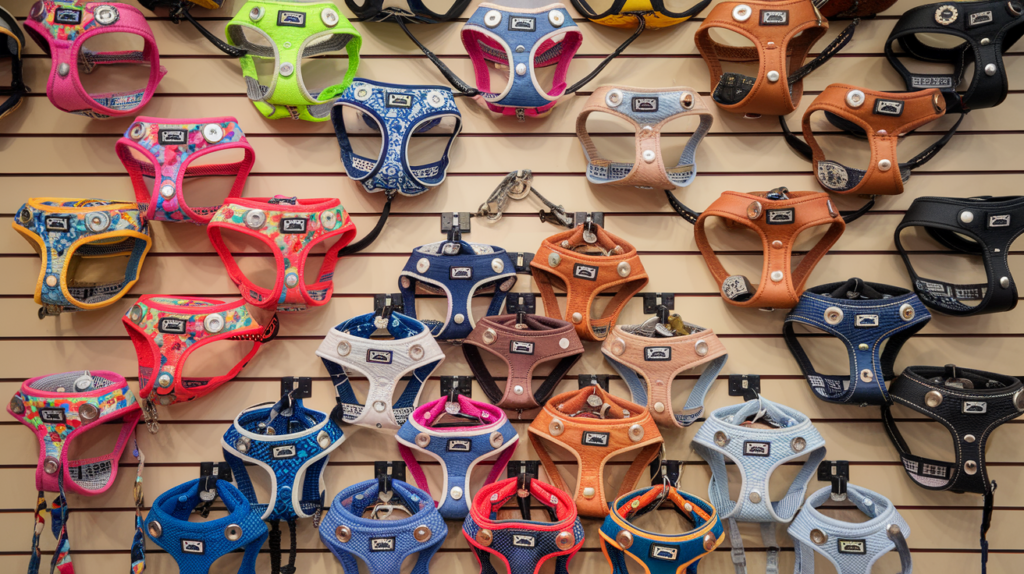Address
304 North Cardinal
St. Dorchester Center, MA 02124
Work Hours
Monday to Friday: 7AM - 7PM
Weekend: 10AM - 5PM
Address
304 North Cardinal
St. Dorchester Center, MA 02124
Work Hours
Monday to Friday: 7AM - 7PM
Weekend: 10AM - 5PM

According to regulations, dogs must wear a collar and leash when going outdoors. This not only helps control their behavior, but also prevents them from getting lost if they get away from you. However, many dog owners face an important question: when should dogs wear collars, and what kind of collars are suitable for them?
The timing depends on the dog, but generally, it’s best to start when they are at least 2-3 months old. Ideally, you should introduce the collar after the dog has had its vaccinations and before its first outing. If the dog is already older, it’s best to wait about a week after bringing them home, once they have established some trust with you.
First, let your dog sniff the collar. When the dog shows interest, reward them. Slowly guide their head through the collar and help them adjust to having this “strange ring” around their neck.
If your dog shows signs of discomfort, quickly remove the collar. You should gradually increase the time they wear it; don’t force them to wear it for long periods right away. It’s best to put the collar on during playtime or while giving treats, so your dog associates it with positive experiences.
Before adding a leash, ensure your dog is completely comfortable with the collar. Start by walking them around familiar areas in your home before venturing outside.
▲Comfort: The collar and harness should be comfortable, without causing harm to the skin or fur.
▲Width and Decorations: A collar that is too wide can restrict your dog’s movement. Be cautious of excessive decorations, as they can pose a choking hazard if they fall off.
▲Material: Choose soft materials like cotton fabric for comfort.
▲Seams: Ensure that seams are well-finished and smooth to avoid causing unnecessary harm to your dog.
1. Standard Collars
These are the most common collars available, usually made of nylon or leather, with a wide price range. Their basic functions and pros and cons are the same.

【Pros:】
■ Easy to put on and take off; dogs generally adapt quickly.
■ Available in various price ranges and can be decorated, with some luxury brands offering custom designs.
■Convenient for attaching ID tags (super important in case your dog gets lost!).
【Cons:】
■ Risks during play: Some dogs like to play rough, and if one dog bites the collar of another, it can lead to choking.
■ ong-haired dogs may get their fur caught; a cylindrical collar might be a better option, though it still carries the same risks.
2. Safety or Breakaway Dog Collars

These collars feature a design that releases under pressure, preventing choking if a dog gets caught or during rough play.
However, the downside is that in an emergency, they may release too easily, making them unsuitable if you need to quickly grab your dog.

If you want to train your dog to walk beside you rather than pull ahead, avoid harnesses that clip on the back. These offer little control and can encourage the dog to pull.
1. Front-Clip Dog Harnesses
When your dog pulls ahead, pulling the leash tight will turn them toward you, redirecting their attention. The downside is that it can feel awkward for some dogs due to shoulder restriction, but it works well for correcting large dogs.
2. Y-Style Front Clip Dog Harnesses
These harnesses feature vertical straps that don’t restrict shoulder movement, making them suitable for dogs that enjoy jogging or running. The front-clip design also helps guide the dog’s movement, applying pressure mainly to the neck rather than the shoulders, which balances the force better.